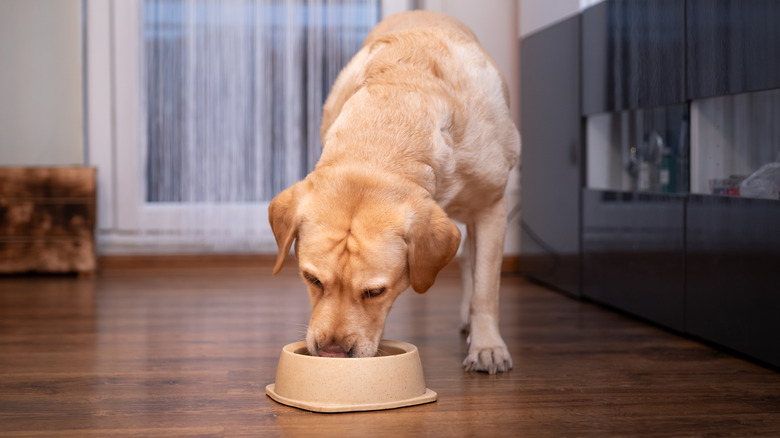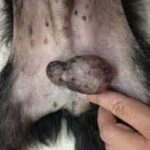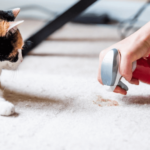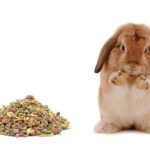Labrador Retrievers are known for their friendly disposition and boundless energy, making them one of the most popular dog breeds around the world. One of the most crucial aspects of caring for your furry companion is ensuring they receive the right amount of food to maintain their health and vitality. But with so many factors to consider—such as age, weight, activity level, and overall health—deciding how much to feed your Labrador can feel overwhelming.
Don’t worry! In this friendly and informative guide, we’ll break down everything you need to know about feeding your Labrador dog. From understanding portion sizes to selecting the right food, we’ll help you create a balanced diet that will keep your pup happy and healthy for years to come. Let’s dive in!
Table of Contents
- Understanding the Nutritional Needs of Your Labrador
- Determining the Right Portion Sizes for Different Life Stages
- Choosing the Best Dog Food Options for Labradors
- Tips for Establishing a Healthy Feeding Routine
- Q&A
- In Summary
Understanding the Nutritional Needs of Your Labrador
Understanding the dietary essentials for your Labrador requires considering their age, weight, activity level, and overall health. Labradors are known for their hearty appetites and can easily become overweight if not monitored carefully. When planning their meals, focus on providing a balanced diet that includes high-quality proteins, healthy fats, and essential vitamins and minerals. Here are some key components to consider for their nutritional needs:
Proteins: Aim for a protein source like chicken, beef, or fish as the first ingredient in their food.
Carbohydrates: Whole grains like brown rice or oats provide energy and support digestion.
Fats: Healthy fats from fish oil or flaxseed are crucial for coat health and cognitive function.
Vitamins and Minerals: Ensure their diet includes fruits and vegetables for added nutrients.
To make feeding easier, consider portion sizes tailored to your Labrador’s typical daily caloric intake, keeping in mind their life stage and activity level. A general guideline for adult Labradors suggests feeding them about 20-30 calories per pound of body weight, but adjusting this based on individual factors is essential.
| Life Stage | Daily Caloric Needs (per pound) |
|---|---|
| Puppy (up to 6 months) | 30-40 |
| Adult (1-7 years) | 20-30 |
| Senior (7+ years) | 15-25 |
Determining the Right Portion Sizes for Different Life Stages
Understanding the appropriate portion sizes for your Labrador is essential, as their dietary needs will vary significantly throughout different stages of life. Puppies, for instance, require more frequent feedings because they are growing rapidly. During this stage, it’s beneficial to feed them a high-quality puppy food formulated specifically for large breeds. Aim for three to four meals a day, gradually transitioning to two meals as they approach adulthood. On the other hand, adult Labradors typically need fewer calories than puppies but still require a balanced diet to maintain their energy and health. For adult dogs, consider factors like activity level and weight management when determining portion sizes.
As your Labrador enters their senior years, their metabolism slows down, and you might need to adjust their diet to prevent obesity. It’s crucial to monitor their weight closely and consult with your veterinarian for tailored advice. Here’s a quick reference table to help guide you in determining the right portion sizes based on your dog’s life stage:
| Life Stage | Meals Per Day | Daily Portion (Cups) |
|---|---|---|
| Puppy (8 weeks – 6 months) | 3-4 | 2-4 |
| Young Adult (6 months – 2 years) | 2 | 3-4 |
| Adult (2-7 years) | 2 | 2-3 |
| Senior (7+ years) | 2 | 1.5-2 |
Always observe your dog’s body condition and adjust portion sizes as needed, ensuring they remain healthy and active. Providing the right amount and type of food at each stage of their life will support their overall well-being and help you enjoy many happy years together.
Choosing the Best Dog Food Options for Labradors
When selecting the ideal food for your Labrador, it’s essential to consider their unique nutritional needs. Labradors are known for their hearty appetites and tendency to gain weight, so choosing a high-quality dog food that balances protein, fat, and carbohydrates is crucial. Look for options that list real meat as the first ingredient, as well as whole grains and vegetables to provide the necessary vitamins and minerals. Avoid foods with excessive fillers or artificial additives, as these may not support your dog’s health effectively.
Additionally, portion control is vital to maintaining your Labrador’s weight. You might want to consider the following factors when determining the best food for your furry friend:
Age: Puppies, adults, and seniors have different nutritional requirements.
Activity Level: More active dogs may require more calories.
Health Issues: Certain conditions may necessitate a specialized diet.
To help you get started, here’s a simple comparison table of several popular dog food brands suitable for Labradors:
| Brand | Main Protein Source | Key Features |
|---|---|---|
| Brand A | Chicken | Grain-free, rich in omega fatty acids |
| Brand B | Salmon | High in protein, supports skin & coat health |
| Brand C | Lamb | Hypoallergenic, ideal for sensitive stomachs |
Tips for Establishing a Healthy Feeding Routine
Portion sizes play a vital role in maintaining a healthy weight for your Labrador. To make it easier, you can use a simple chart based on their age, weight, and activity level to determine the right amount of food. Here’s a quick reference guide:
| Weight of Dog (lbs) | Daily Food Amount (cups) |
|---|---|
| 50 | 2 to 2.5 |
| 70 | 2.5 to 3 |
| 90 | 3 to 3.5 |
Additionally, remember to monitor your dog’s condition and adjust portions as necessary. Regularly assess their weight and consult your vet for personalized advice. Always ensure fresh water is available, as hydration is essential for maintaining their health and energy levels. By combining these practices, you’ll be well on your way to establishing a balanced and healthy feeding routine for your Labrador.
Q&A
Q1: What is the average weight of a Labrador Retriever?
A1: On average, adult male Labradors weigh between 65 to 80 pounds, while females typically weigh between 55 to 70 pounds. Factors such as age, activity level, and overall health can influence these weights, so it’s essential to consult your veterinarian for personalized advice.
Q2: How much food should I feed my Labrador?
A2: The amount of food depends on your dog’s age, weight, and activity level. Generally, adult Labradors require about 2 to 3 cups of high-quality dog food per day, divided into two meals. Puppies, on the other hand, will need more frequent feeding and may consume up to 4 cups a day, depending on their age and growth rate.
Q3: Should I adjust my Labrador’s food based on their activity level?
A3: Absolutely! Active Labradors, especially working or sporting dogs, may need more calories and, consequently, more food than those with a more sedentary lifestyle. Keep an eye on their body condition and adjust their food portions accordingly.
Q4: What type of food is best for Labradors?
A4: Look for a high-quality dog food that lists meat as the first ingredient. Labradors thrive on a balanced diet rich in protein, healthy fats, and essential nutrients. Consider formulas specifically designed for medium to large breeds, and consult your vet for recommendations tailored to your dog’s needs.
Q5: How can I tell if I’m feeding my Labrador the right amount?
A5: You can check your dog’s body condition score (BCS) to assess whether they’re at a healthy weight. You should be able to feel their ribs without excess fat covering, and they should have a visible waist when viewed from above. If you’re unsure, your veterinarian can help assess their weight and diet.
Q6: Is it okay to give my Labrador treats?
A6: Yes! Treats can be a great way to reward your dog, but they should only make up about 10% of their daily caloric intake. Be sure to account for treats in their overall food intake to prevent overfeeding and maintain a healthy weight.
Q7: How often should I change my Labrador’s food?
A7: It’s usually best to stick with the same high-quality food unless there’s a specific dietary need. If you do need to change your dog’s food, do so gradually over a week or so to avoid digestive upset.
Q8: What should I do if my Labrador seems to be gaining too much weight?
A8: If you notice your Labrador is gaining weight, it’s essential to reduce their food intake and increase their exercise. Consult your veterinarian for a tailored weight management plan that includes a proper diet and exercise regimen.
Q9: Can I feed my Labrador homemade food?
A9: Yes, but you need to ensure that the homemade diet is well-balanced and meets all your Labrador’s nutritional needs. It’s highly recommended to work with a veterinary nutritionist to create a suitable meal plan.
Q10: When should I transition my Labrador from puppy food to adult food?
A10: Most Labradors can transition to adult food between 12 to 18 months of age. Puppy food is higher in calories to support their growth, so make sure to switch once they’ve reached their adult size. Always consult your veterinarian for the best timing based on your dog’s specific growth and needs.
By keeping these tips in mind, you can help ensure your Labrador stays happy, healthy, and well-fed!
In Summary
feeding your Labrador dog doesn’t have to be a daunting task. By understanding their nutritional needs, age, activity level, and weight, you can confidently determine the right portion sizes to keep your furry friend healthy and happy. Remember, it’s essential to monitor their body condition and adjust their food intake as needed. Don’t hesitate to consult your veterinarian for personalized advice tailored to your dog’s specific needs. With the right diet and a little bit of care, you’ll help them thrive, ensuring they have the energy to play, explore, and enjoy every moment with you. Happy feeding!
















